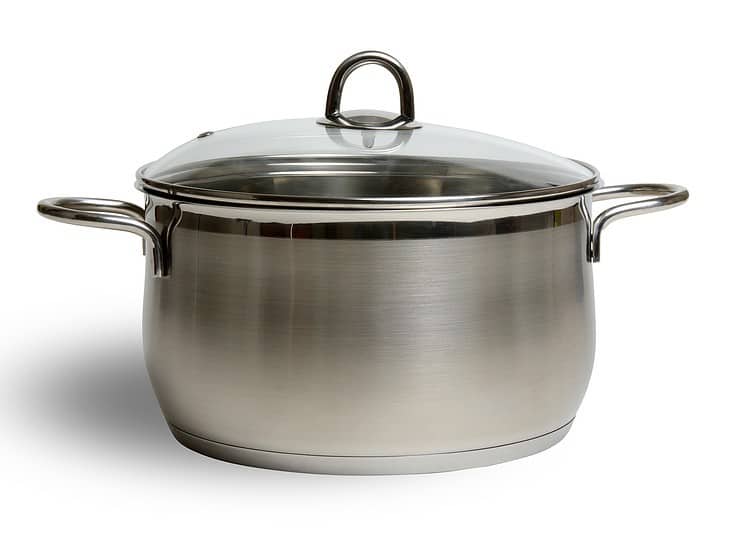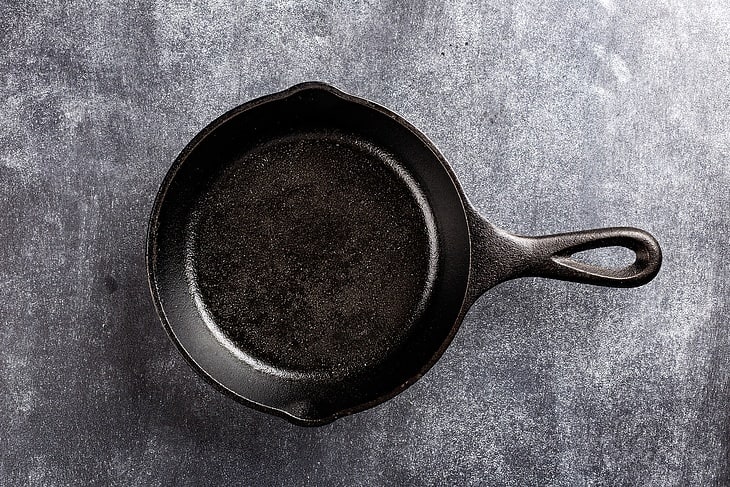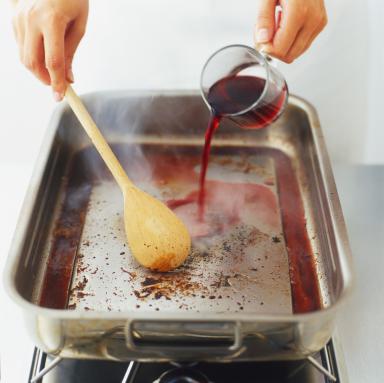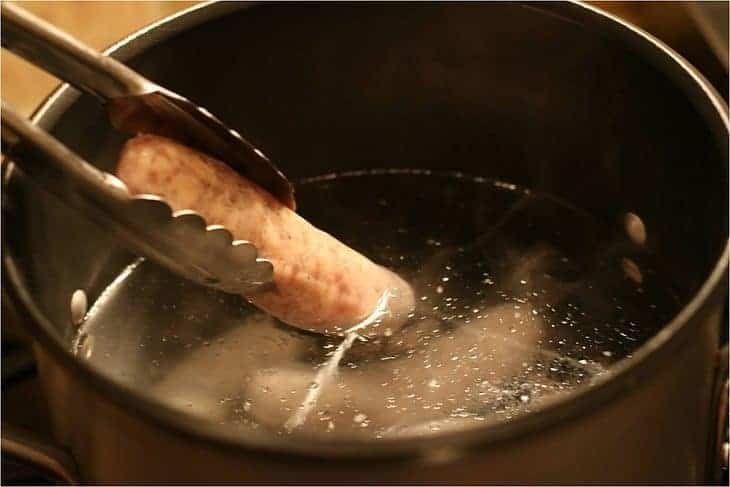How Long to Boil Scott Petersons Beef Polish Sausage
Polish Sausage is a highly versatile meat that can be cooked in a variety of ways. This is one of the main reasons for its widespread popularity.
Although simple, it lends itself to a variety of recipes. However, there is a single boiling method that is considered the traditionally accepted way of how to cook Polish Sausage.
More...
Things You Need To Know Before Starting

Via pgeveryday.com
Polish Sausage is known by a variety of names, and it's important to keep an eye out for what kind of meat to buy before you start making this dish.
Foremost, you want to buy properly cased pork sausage. This can be hard because many products are sold as Polish sausage without being entirely made of pork.
You want to avoid anything with fillers, such as turkey and beef. You also want to stay away from anything that's smoked because this will affect the final flavor of your meal.
My goal for this recipe is to teach you how to boil the sausage. Why? That's the entire point of cooking any cased meat. There are other ways to cook Polish sausage, but I'm simply talking about the most authentic way to do the job.
What You'll Need
#1 Pork Polish Sausage

Between 2 and 4 pounds of meat is preferred for a meal that serves 4 to 6 people. Polish sausage has many different names in butcher shops, supermarkets and delis, but anything marketed as kielbasa, klobasa or a similar name should suffice.
What we usually think of as Polish Sausage is widely used throughout Central Europe, and that has led to a proliferation of different names for it.
#2 Large Pot

You'll be boiling a large amount of meat, so you'll want a pot that's large enough to accommodate both the meat and the water that you'll add.
The type of pot doesn't matter unless you're thinking about using the pot to brown the sausage, in which case, a more solid non-stick steel or ceramic pot is preferred.
If you elect to use a thinner pot, you may wish to add more water in order to keep your meat from sticking to the bottom.
#3 Frying Pan (Optional)

Some cooks like to brown the meat before boiling it in order to add a bit of flavor. Almost any type of frying pan will do as pork does not benefit in the same way as beef does from the use of specialty pans like cast iron pans.
A non-stick frying pan is the preferred choice in this instance. Some cooks elect to use a deeper frying pan in order to forego using the pot entirely, and I'll discuss that approach later.
#4 Water And Beer (Optional)

Depending on the amount of meat you're cooking, you'll have to eyeball this a bit. Generally, 1/4 inch of water above the meat will do.
The meat should displace quite a bit of the volume of the water, but if the meat-to-water ratio ends up a bit heavy on the meat side, you can add more water.
If you elect to use beer, you should reduce the amount of water that you use to compensate for the volume of beer being added. When using beer, one bottle should suffice.
#5 Seasoning

Via thespicepeople.com.au
We're not looking to heavily flavor this particular meal. Polish Sausage has a lot of its own flavor, so what you're shooting for is to simply add a hint of something and replace flavors lost while boiling the meat.
For this recipe, you'll need:
- Half of a bay leaf.
- 1 teaspoon of marjoram, which is a hardier cousin of oregano.
- 1 or 2 gloves of garlic.
- 4 peppercorns and 4 mustard seeds.
- You'll also want one onion, which you'll need to quarter.
How To Cook The Perfect Poslish Sausage
The 7 instruction steps listed here are easy to follow but it costed me a lot of time to try and experiment.
So, to get the step-by-step instruction, please complete the form below. Not only it would help you easily cook the perfect Polish sausage but give me motivation to learn more, to experiment more, and to bring the most valuable cooking tips to you. 🙂
[thrive_lead_lock id='10868']
Step 1. Prepare The Meat

Via goodeggs.com
Polish sausage often comes frozen, and people frequently freeze it for storage too. Your first concern is making sure that it's properly thawed. Don't take chances trying to thaw frozen meat through the cooking process.
In the best scenario, this will produce a slimy and mushy result. In the worst scenario, it's a formula for undercooked meat and food poisoning. The best way to thaw frozen meat is to leave it in the fridge overnight to defrost at a safe temperature.
Step 2. Choose A Cooking Method

In this recipe, we'll look at several ways to boil the sausage. This includes using a frying pan or a pot, and in some cases, deglazing the pan or pot will be an additional step.
If you're a beginner cook, the wisest choice is to use a pot and simply boil the contents. Once you've mastered that approach, you can revisit the recipe and try something more complex.
It can be tempting to hear about the idea of deglazing a frying pan with beer, and you might want to jump right to it. Bear in mind, however, that every layer of complexity you add to the recipe is also a chance to burn something.
If you're not experienced with more advanced techniques like deglazing, take it slow and simply boil your sausage in a pot. You'll still get delicious results.
Step 3. Sear The Meat (Optional)

Via bonappetit.com
If you're using a frying pan to sear the meat, you'll need to bring your pan up to medium heat. In order to get a quicker sear, you can add butter.
You do not want to overcook the meat during this phase. The goal is simply to get a good brown on the outside of the sausage casing in order to add flavor.
If you're feeling especially adventurous or you just don't want to dirty a frying pan, you can do this step in the pot. However, if you use the pot for searing, you're now committed to deglazing it properly with beer too.
Simply boiling the glaze at the bottom with water will produce a brown and unpalatable water for the boiling process. If you're looking to boil the seared meat without deglazing, remove the meat from the pan and pat it dry with a paper towel.
Step 4. Deglaze The Frying Pan (Optional)

Via about.com
Many cooks like to recover the flavor of all the burned bits from the bottom of the frying pan. This process is known as deglazing. Although the process is more commonly associated with wine thanks to the popularity of beef burgundy, you can also use beer.
The beer will add its own flavor while also taking up the flavors of the burned bits. Simply add a few splashes of the contents of the bottle of beer. This will soften the burned bits and allow you to loosen them up with a spatula. Keep adding beer as needed to loosen everything. Try to reserve at least half the bottle for the boiling process.
Some cooks also like to add the onions at this stage in order to bring together the different flavors. This is not necessary, but it does give you something to try.
Step 5. Boiling (Pot Method)

Via olivethis.com
If you're using the water-only method, all you need to do is take your water plus all your seasonings and drop them into the pot. You'll bring the contents to a boil and then add the Polish Sausage and onions to the mixture. Once you've done that, simply cover the pot and allow it to boil for 45 to 50 minutes.
If you're using beer, you'll need to be a little more attentive as beer tends to reduce as it cooks. The process is the same as for the regular boiling method, except that you add the beer in addition to the water.
It's wise to keep a second bottle of beer handy in case you do need to add a bit to the pot. The cooking time remains the same, but you'll need to check on the food more often.
Step 6. Remove The Contents

Via bbcgoodfood.com
If you're merely boiling the sausage in water.
In this case, there isn't much to do here. Simply remove the sausages from the water and place them on a plate that has a paper towel on it to soak up any excess water or beer.
As with any meat, you should let it rest in order to allow the juices to settle down and the post-cook process to take hold.
If you're using the two possible beer methods.
Whether in the pot or in the frying pan, you'll likely want to remove the contents to a deeper serving dish. You don't want to lose all that good flavor from the beer and the deglazing by taking the sausage completely out of the mixture.
Place the meat into the dish, and you can then use a ladle to pour some of the liquid on top of the meat. You may also wish to add the onions to the dish.
Step 7. Serve!

Via cookingandbeer.com
Polish Sausage is great by itself, and it also pairs well with other options. You can serve it with cooked or steamed cabbage for a proper Central European taste. It also goes well with mashed potatoes or dumplings. Almost any starchy food will taste good alongside Polish Sausage.
In terms of drink pairings, there's only one right answer in this instance, and it's beer. It provides the right Central European tone for the meal. Pork and beer are natural complements in terms of most diners' palates.
[/thrive_lead_lock]
3 Useful Tips For You
#1 Avoid Fillers At All Costs
When you purchase a Polish Sausage, it's important that it be plain. Many companies sell a version of Polish Sausage made of leftover parts from beef, turkey and pork. This is not the good stuff, and you should avoid it.
Likewise, avoid purchasing anything that's been smoked or otherwise flavored by the manufacturer. Pork brings enough flavor to the party and doesn't need extra additives
#2 Do Not Pierce Or Slice Before Serving
This completely defeats the purpose of boiling cased meat. Non-professional cooks sometimes pierce or slice the sausages before serving to encourage them to cook or to check that they are fully cooked.
Do NOT do this! Once the casing has been pierced, the contents of the sausage will leach into the water, leaving sausage dry and less flavorful.
#3 Choose Beer Carefully
For most purposes, darker beers are the preferred choice. Many cooks choose to use Guinness or a stout that's close to a Guinness.
For example, many restaurants in the Czech Republic cook klobasa using a dark stout that's basically the region's own version of Guinness. Darker beers tend to have stronger flavors, and a stout or a Guinness also has a higher fat content.
This gives the liquid greater density and can be handy if you want to take the dish even further to make a proper Central European goulash.
Conclusion
Polish Sausage is an amazingly versatile type of meat to cook with, but it is essentially a cased meat. That means you're not getting the most mileage out of the flavor unless you're boiling it.
Beginners should consider starting simple and going straight to the boiling method. However, there's a lot of room to grow with this recipe. You can begin to add layers of complexity to the meal by using a frying pan, deglazing techniques and beer.
It's easy to leap from this recipe to other popular Central European dishes once you've mastered the cooking techniques.
Have you tried this recipe? Let me know in the comments how you feel about it or what special spin you've added to Polish sausage. If you enjoyed this recipe, please take the time to share it with your friends and family.
Source: https://chewtheworld.com/how-to-cook-polish-sausage/
0 Response to "How Long to Boil Scott Petersons Beef Polish Sausage"
ارسال یک نظر